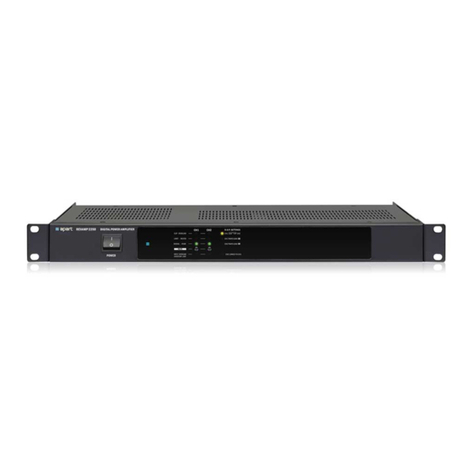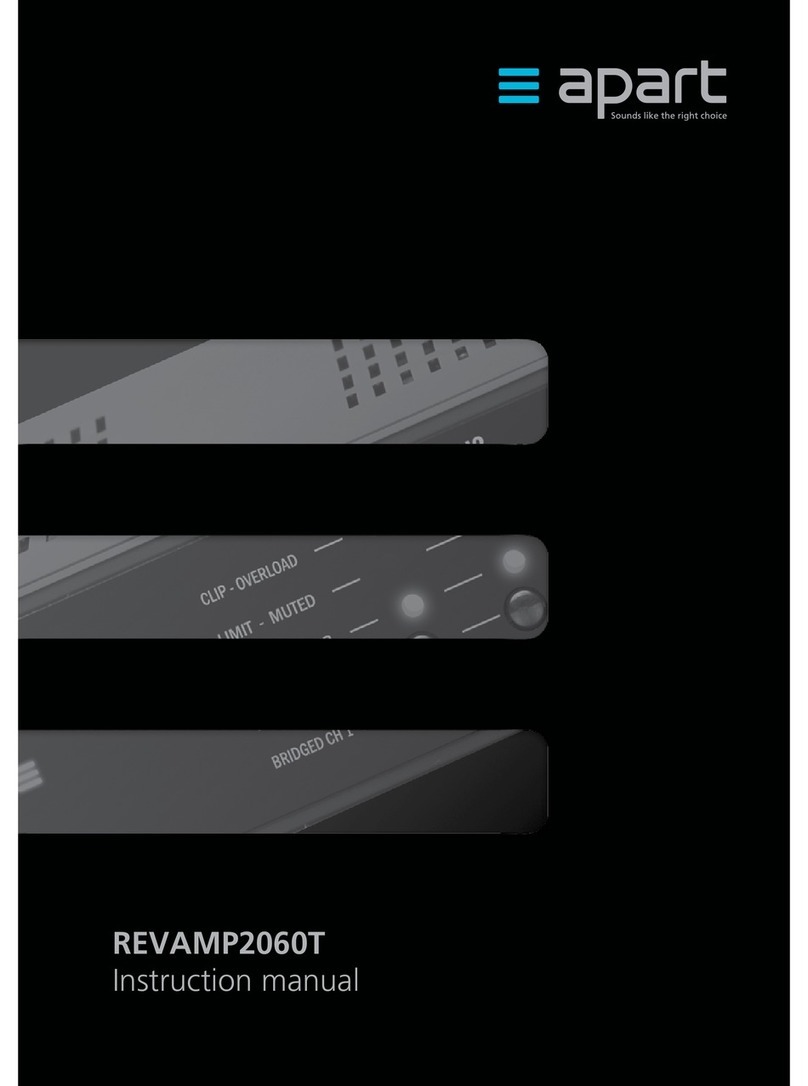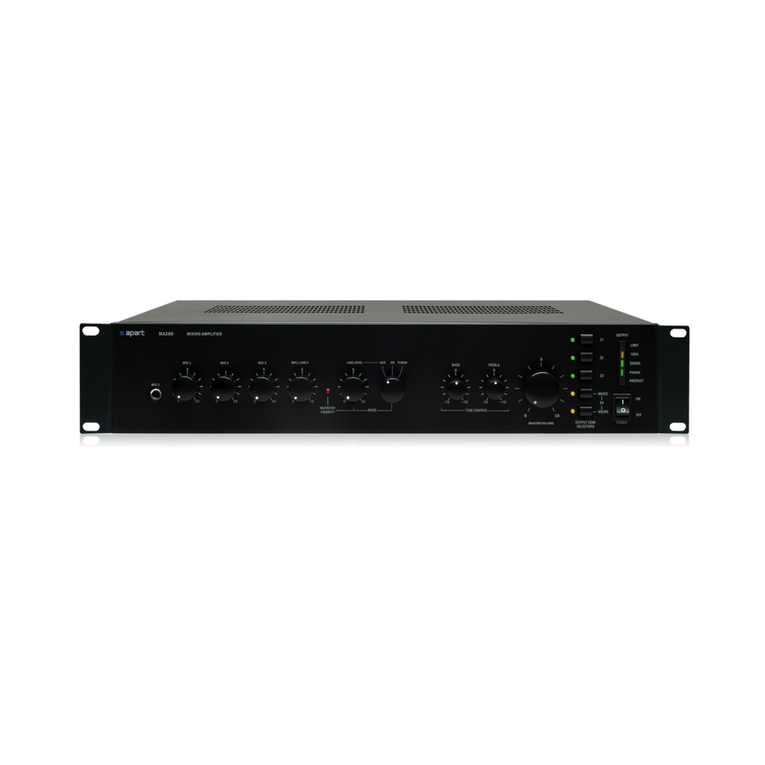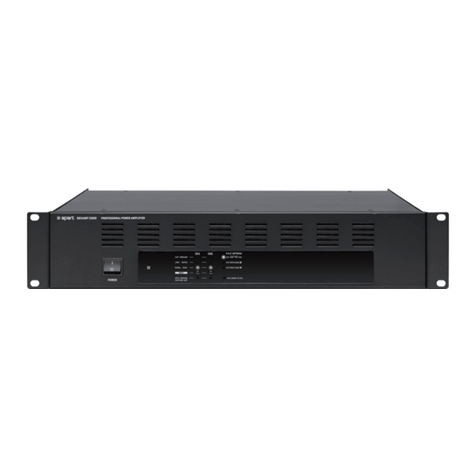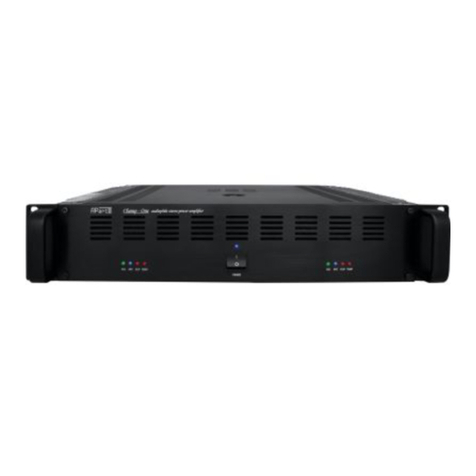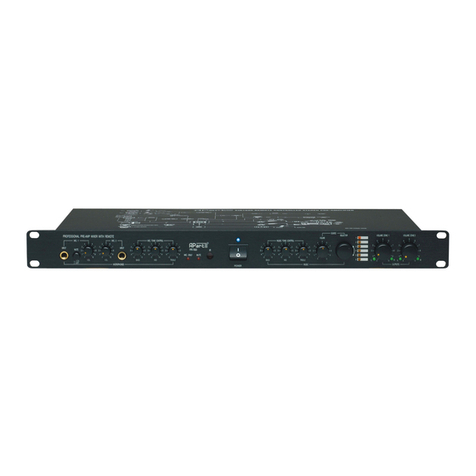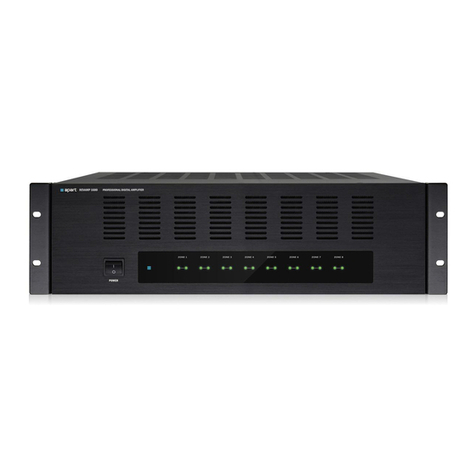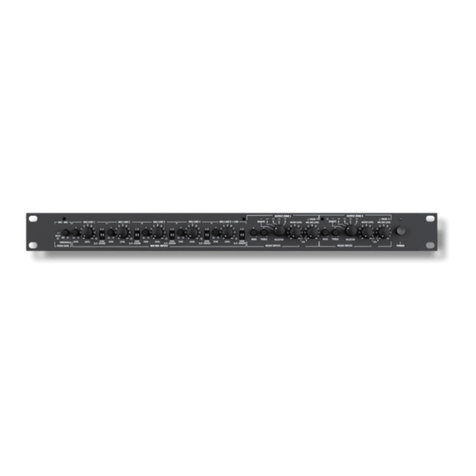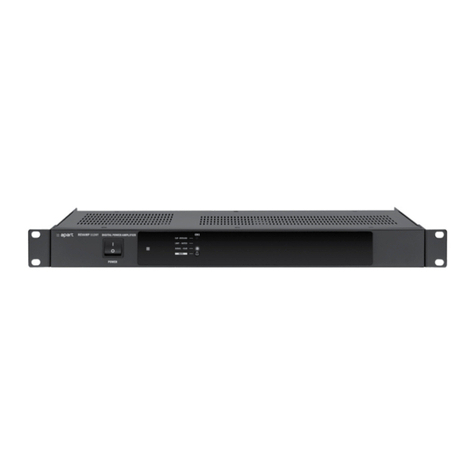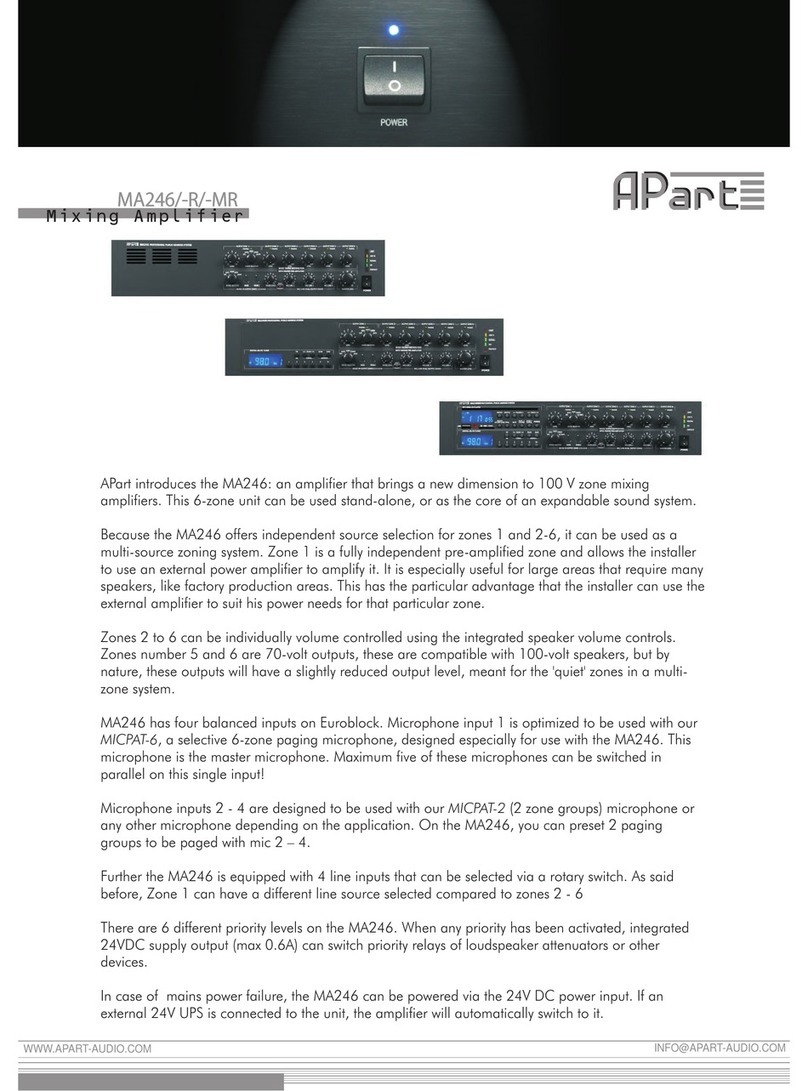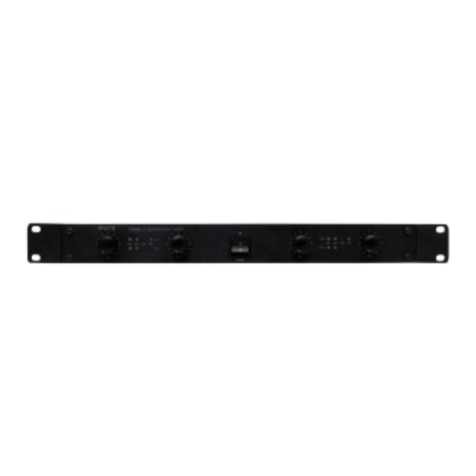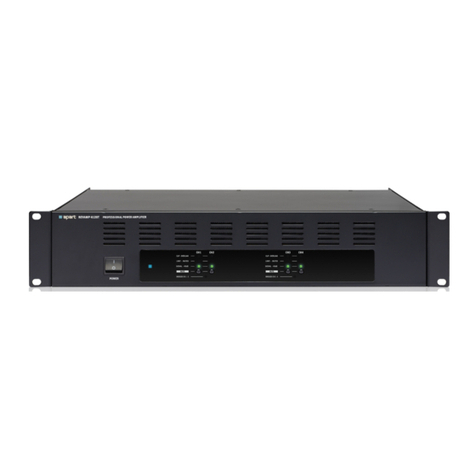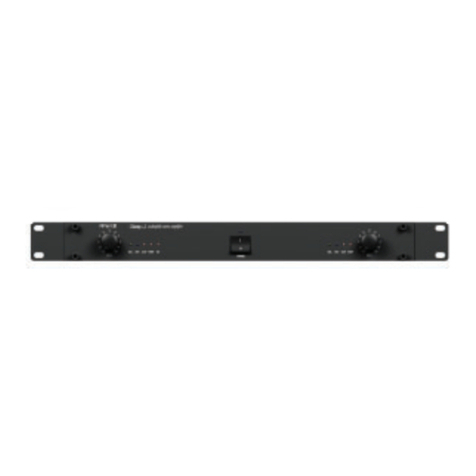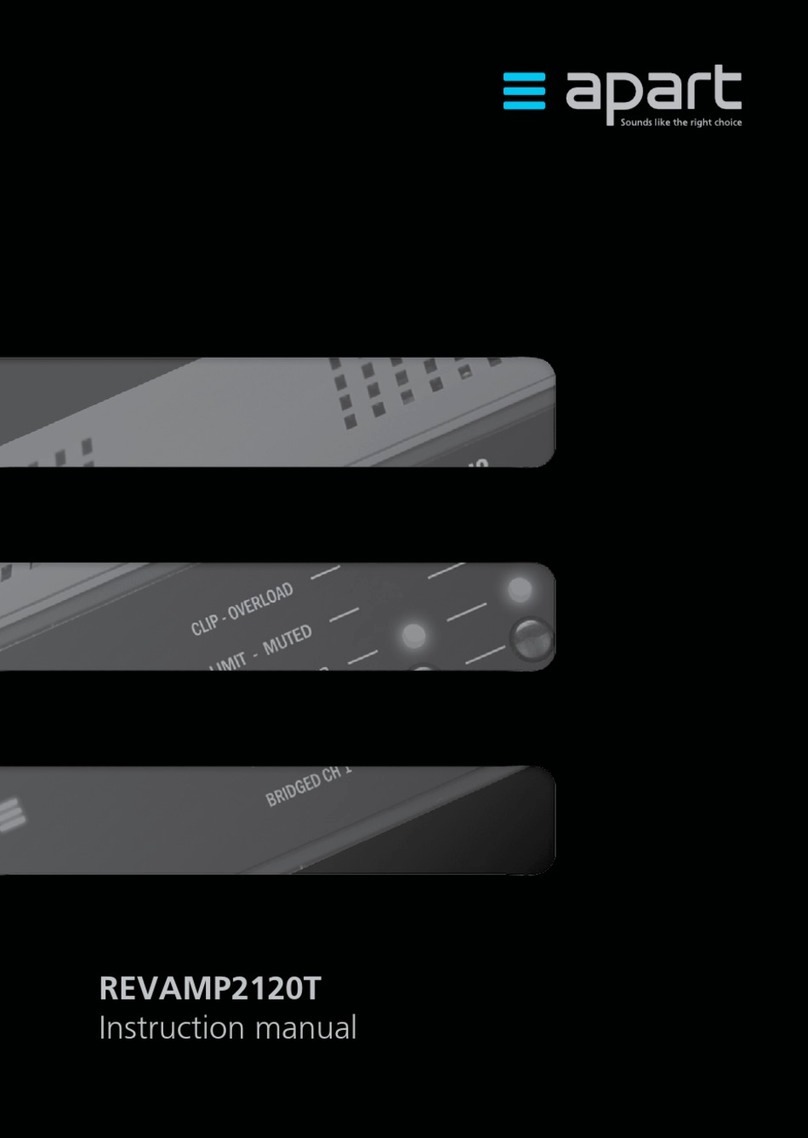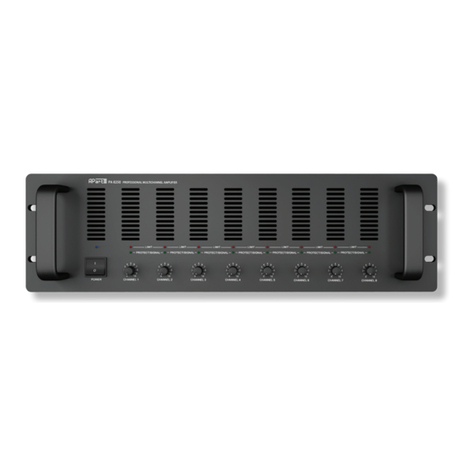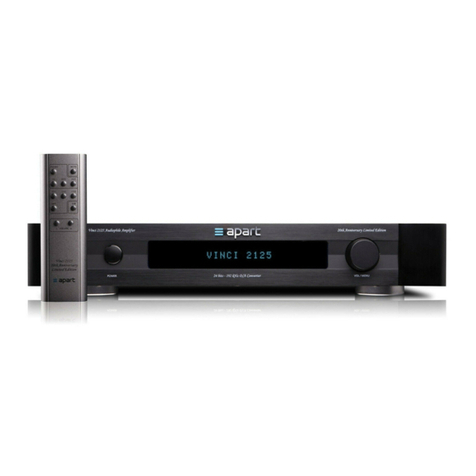9
will be muted, and the chime will sound. Set the chime level as
desired. The paging contact will also activate the priority output
(6). To test the chime level, a chime test button is present.
3. MIC input: connect a microphone here: the euroblock input
accepts balanced microphone or line level signals. Set the mic/
line switch accordingly. Phantom power (48 V) can be applied
to the balanced euroblock by pushing the phantom power
switch. The led beneath the switch will be lit when phantom
power is present. Adjust the gain potmeter so that the clip
led does not light up when the signal is at its highest level. If
necessary, activate the vox circuitry by turning the vox potmeter
until you hear an audible “click”. Now turn the vox potmeter
up until the vox circuit is activated. The MIC volume can be set
using the front panel potmeter (6). MIC can be activated by
pressing the MIC select switch on the front panel (2). The vox
circuit, when activated, will attenuate (30 dB attenuation) all
lower priority sources (input 1-2). MIC input is compatible with
the local input panel .
4. Input 1: line level input on RCA connectors. Adjust the gain
potmeter so that the clip led does not light up when the signal
is at its highest level.
5. Speaker out and output EQ: speaker output connector on
euroblock. Use the 4 ohm, or the 70 volt or the 100 volt
output. Never use more than one output at the same time. Use
the Lo and Hi EQ potmeters to adjust the sound as desired.
6. Priority out: this connector will supply 24 VDC, max 500 mA
when priority is activated. Priority will be activated by the
emergency switch, or by the paging contact (and the chime
